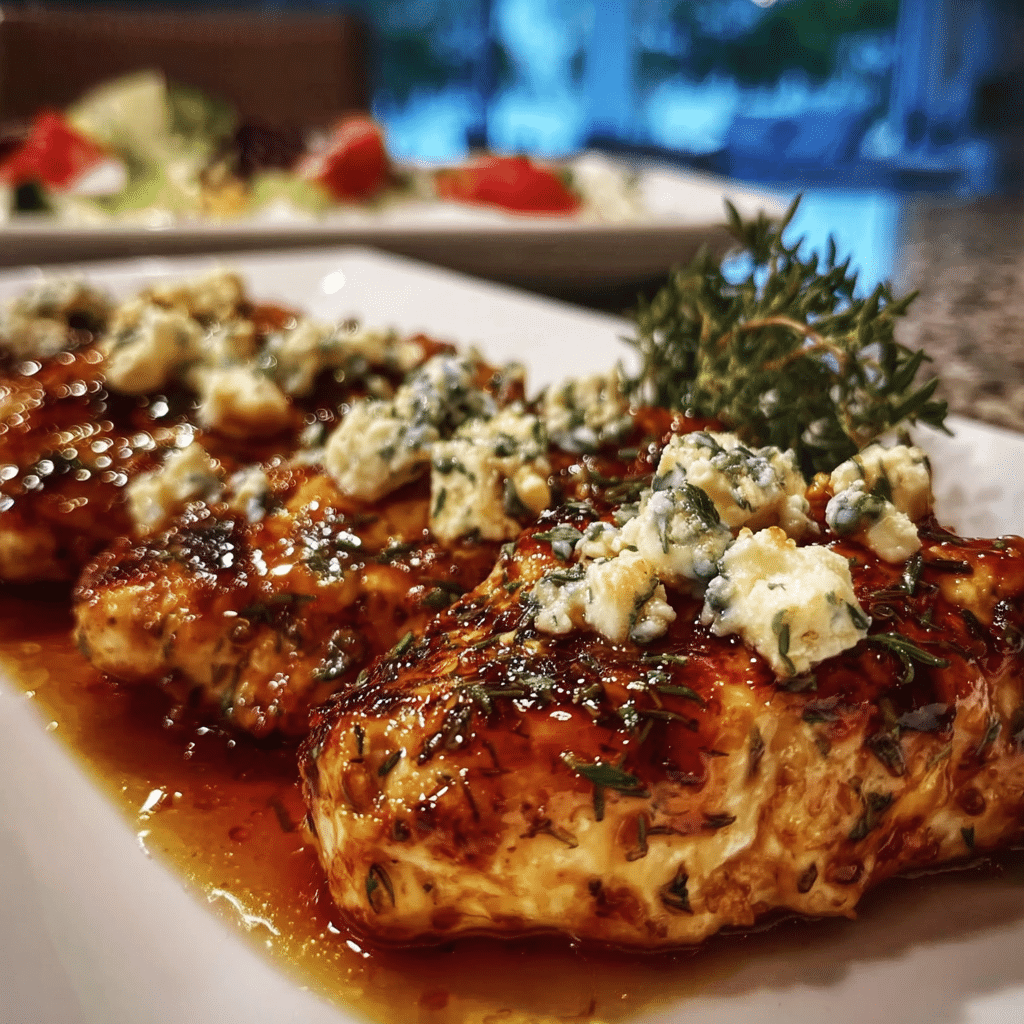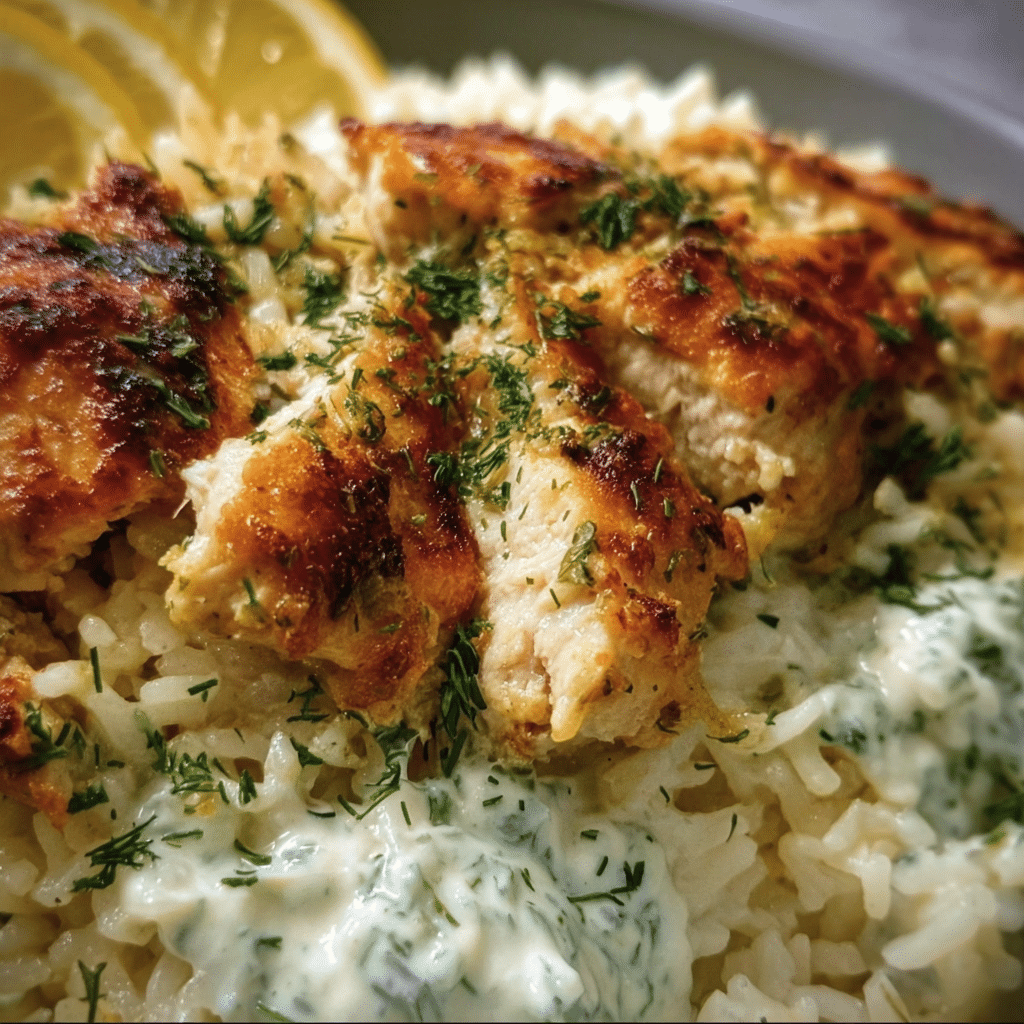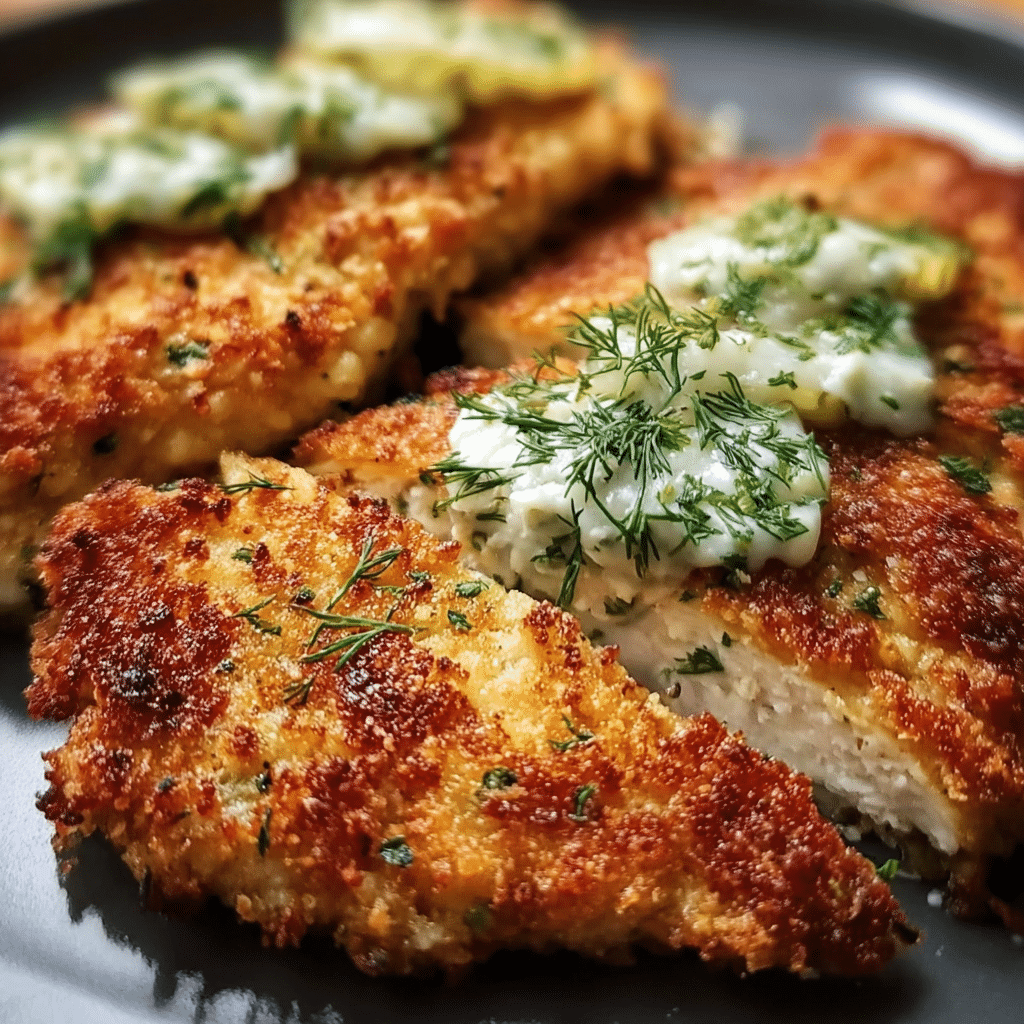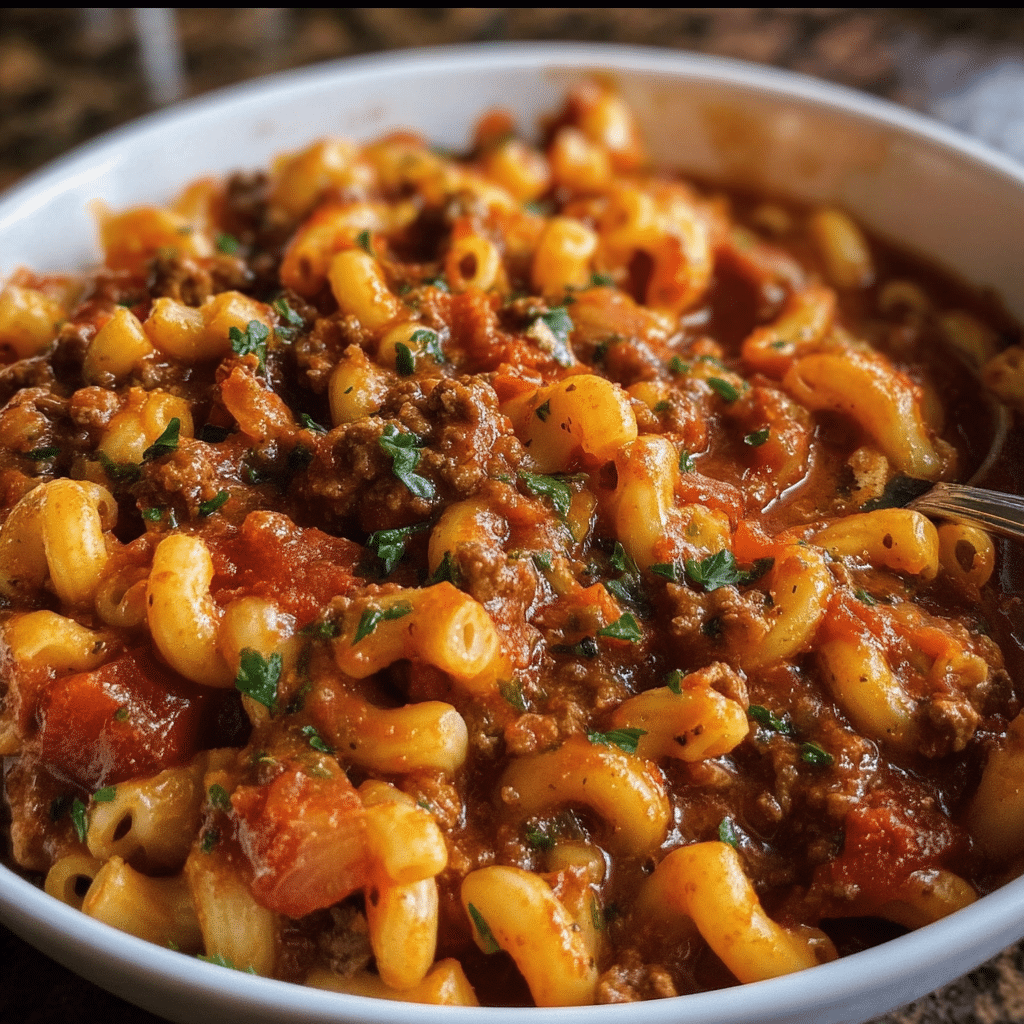Pumpkin seed butter is a delightful and nutritious spread that has captured my heart and palate in ways I never anticipated. It all began one crisp autumn afternoon when I stumbled upon a local farmers’ market. The vibrant colors of pumpkins, coupled with the warm, inviting smell of roasted seeds, lured me in. As I browsed through the stalls, I encountered a vendor proudly showcasing jars of pumpkin seed butter. Intrigued, I sampled a spoonful, and it was love at first taste. The rich, nutty flavor paired with a slight sweetness was unlike anything I had ever tried. I knew then that I had to learn how to make my own pumpkin seed butter at home.
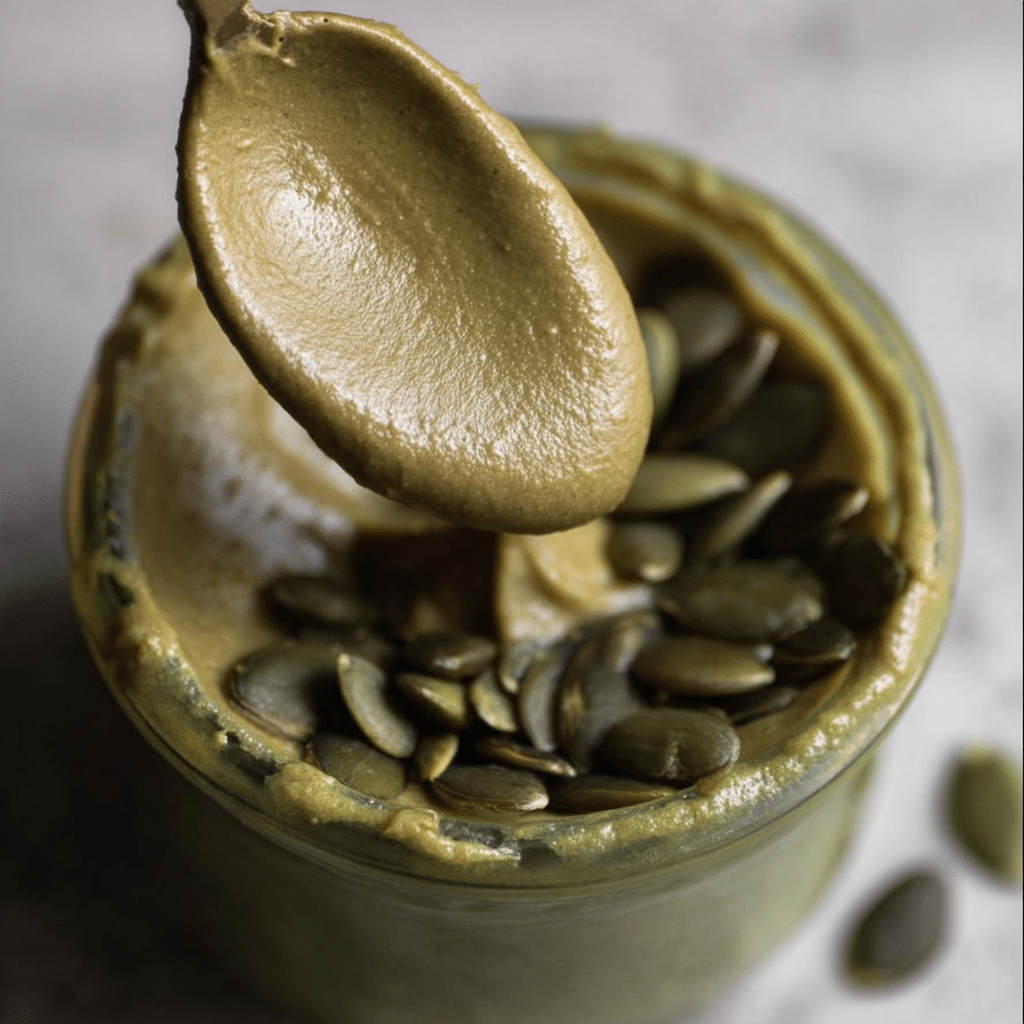
As I embarked on this culinary adventure, I discovered that pumpkin seed butter is not just a delicious spread; it has a rich cultural history steeped in tradition. Traditionally, pumpkin seeds, or pepitas, have been used in various cuisines, particularly in Mexico, where they are a staple ingredient in many dishes. The practice of grinding toasted pumpkin seeds into a buttery paste can be traced back centuries, with indigenous peoples using them for both culinary and medicinal purposes. It became apparent to me that this simple recipe is a gateway to understanding a broader culinary narrative, connecting me to cultures that have celebrated the humble pumpkin seed for generations.
The Story Behind This Recipe
What makes pumpkin seed butter special is its versatility and nutritional profile. Unlike traditional nut butters, which can be heavy and rich, pumpkin seed butter offers a lighter yet satisfying alternative. It’s a perfect choice for busy families who are always on the go, as it can be swiftly incorporated into various meals, from smoothies to sandwiches. With the school year in full swing, I found myself constantly searching for quick and nutritious dinner solutions. Pumpkin seed butter became my secret weapon, allowing me to whip up a deliciously simple meal in minutes. I would spread it on whole grain toast, top it with banana slices and a drizzle of honey, and voilà—a wholesome breakfast or snack that my kids loved!
Seasonal relevance is another reason why pumpkin seed butter resonates with me. As fall approaches, pumpkins become abundant, and making pumpkin seed butter becomes a wonderful way to celebrate the season. It’s a dish that invites creativity; you can add spices like cinnamon or nutmeg for a festive twist, or blend in some cocoa powder for a rich chocolate flavor. It’s a recipe that not only nourishes the body but also warms the heart, evoking memories of family gatherings and cozy evenings spent together.
As I share this guide with you, I promise that you’ll not only learn how to make your own pumpkin seed butter but also gain insights into its cultural significance and health benefits. We’ll explore the various ways you can incorporate this delightful spread into your meals, making it a staple in your kitchen. Whether you’re a busy parent looking for quick meal solutions or someone simply eager to try something new, pumpkin seed butter is a recipe worth embracing.
Why You’ll Love This Dish
In a world where convenience often overshadows nutrition, pumpkin seed butter emerges as a beacon of hope. It’s not just a spread; it’s a testament to the beauty of simple ingredients coming together to create something wonderful. With the promise of a wholesome, homemade option at your fingertips, you’ll find yourself reaching for pumpkin seed butter again and again. Dive in with me as we unravel the rich history, cultural significance, and delightful recipes that this charming ingredient offers!
The Rich History and Cultural Significance of pumpkin seed butter
The rich history and cultural significance of pumpkin seed butter are as fascinating as the flavor it imparts. To truly appreciate this delightful spread, we must delve into its origins, regional variations, and how it has evolved over time. Pumpkin seeds, known as pepitas in many Latin American cultures, have been cherished for their nutritional value and versatility. Archaeological evidence suggests that they have been cultivated for thousands of years, with the earliest records dating back to the ancient civilizations of Mesoamerica. These cultures utilized every part of the pumpkin plant, with seeds being roasted and ground to create a paste that would eventually evolve into what we now recognize as pumpkin seed butter.
Origins and History
In Mexico, pumpkin seeds have a long-standing tradition in culinary practices. The ancient Aztecs prized them not only for their flavor but also for their health benefits. They were often used in traditional dishes like mole, a rich sauce that combines various ingredients with a base of ground seeds and nuts. The practice of grinding seeds into a paste has been passed down through generations, adapting to modern tastes while retaining its traditional roots. The evolution of pumpkin seed butter has seen it gain popularity beyond Mexican cuisine, finding its way into health food stores and kitchens around the world.
As I began to experiment with making my own pumpkin seed butter, I discovered that the process was not only enjoyable, but it also connected me to the generations of cooks who have crafted this delicious spread. The act of roasting seeds and blending them into a smooth, creamy consistency felt like a tribute to the countless individuals who have celebrated this ingredient throughout history. Each jar of homemade pumpkin seed butter is a reflection of time-honored techniques, flavored with my own personal touch.
Cultural Significance
Beyond its culinary uses, pumpkin seeds hold cultural significance in various traditions. In Mexico, for instance, they are often consumed during Day of the Dead celebrations, symbolizing nourishment for the spirits of loved ones. Additionally, pumpkin seeds have been celebrated for their medicinal properties, believed to support heart health and improve overall well-being. As I learned more about these cultural practices, I felt a deeper connection to the pumpkin seed butter I was creating. It became more than just a recipe; it was a link to a rich tapestry of cultural history.
Today, pumpkin seed butter is embraced by health enthusiasts and food lovers alike. Many renowned chefs have incorporated it into their dishes, creating unique culinary experiences that highlight its nutty flavor and creamy texture. From artisanal spreads found in gourmet markets to innovative recipes in popular cookbooks, pumpkin seed butter has established itself as a vibrant member of the nut butter family.
Nutritional Benefits
One of the most appealing aspects of pumpkin seed butter is its impressive nutritional profile. Rich in healthy fats, protein, and essential vitamins and minerals, it offers a plethora of health benefits. Pumpkin seeds are an excellent source of magnesium, zinc, and iron, making them a powerhouse of nutrition. As a busy parent, I appreciate that pumpkin seed butter is not only delicious but also an easy way to introduce these vital nutrients into my family’s diet. It’s a wonderful ingredient to incorporate into smoothies, oatmeal, or even savory dishes. The health-conscious among us can rejoice knowing that they are enjoying a treat that is both satisfying and nourishing.
In conclusion, the history and cultural significance of pumpkin seed butter are woven into the fabric of culinary traditions across the globe. From its ancient origins to its modern-day popularity, this delightful spread has evolved while retaining its essence. As you explore the world of pumpkin seed butter, you’ll not only recreate a delicious recipe but also connect with the rich narratives that accompany it. So let’s roll up our sleeves and dive into the art of making pumpkin seed butter together!
Essential Ingredients for Perfect pumpkin seed butter
Creating your own pumpkin seed butter at home is not only delightful but also an empowering experience that allows you to control the quality and flavor of your spread. To craft the perfect batch, you’ll need a few essential ingredients, each playing a vital role in the final taste and texture. Let’s dive into the ingredients you’ll need and why they matter.
Essential Ingredients
- Raw Pumpkin Seeds (Pepitas) – 2 cups: The star of the show! Raw pumpkin seeds are packed with nutrients and healthy fats. They contribute a rich, nutty flavor to your pumpkin seed butter. Opt for high-quality, preferably organic seeds to ensure the best flavor and health benefits.
- Salt – ½ teaspoon: A pinch of salt enhances the natural flavors of the pumpkin seeds. You can adjust this based on your taste preference or dietary restrictions.
- Sweetener (optional) – 1-2 tablespoons: Depending on your taste, you can add honey, maple syrup, or agave nectar. This is optional but can balance the nuttiness of the seeds beautifully.
- Oil (optional) – 1-2 tablespoons: A neutral oil like grapeseed or a mild olive oil can help achieve a smoother consistency. This is particularly useful if you prefer a creamier texture.
Each ingredient plays a crucial role in the development of flavors and texture in your pumpkin seed butter. The pumpkin seeds provide the base, while salt enhances taste; sweeteners balance the flavor, and oils can alter the texture to your preference.
Print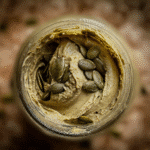
Pumpkin Seed Butter
Ingredients
- 2 cups pumpkin seeds
- ½–1 teaspoon sea salt more to taste if needed
- 1–2 teaspoons coconut oil if needed
Instructions
- Pre-heat your oven to 300°F / 150°C.
-
Spread the pumpkin seeds out on a baking sheet and toast for about 15 minutes, stirring occasionally. Allow the seeds to cool slightly.2 cups pumpkin seeds
- Transfer the pumpkin seeds into the bowl of a food processor.
- Pulse it a few times, then start running continuously. You’ll need to stop and scrape the sides and bottom every once in a while.
- At around the 5 minute mark the seeds should have gone from crumbly into a bit of a paste.
- Keep running and scraping until it loosens up and becomes a smooth butter. Depending on your pumpkin seeds and your food processor, this should take about 15-20 minutes.
-
Add the salt, a bit at a time, and tasting between each addition.½-1 teaspoon sea salt
- Scrape the pumpkin-seed butter into a clean jar.
Shopping Tips
When shopping for your ingredients, quality matters significantly. For pumpkin seeds, look for those that are green and plump, indicating freshness. Check for any signs of mold or off-smells, which indicate that the seeds may be stale. Organic seeds are preferable as they are grown without harmful pesticides, ensuring a clean product.
Salt can be any variety, but I recommend sea salt for its mineral content and subtle flavor that complements the seeds nicely. If you’re considering sweeteners, go for pure maple syrup or raw honey for an authentic taste. Always check for additives in any oils you choose; they should be cold-pressed and free from hydrogenated fats.
Seasonal availability is not a significant issue with these ingredients, as pumpkin seeds can be found year-round in health food stores and supermarkets. However, if you’re feeling adventurous, you might consider sourcing local pumpkin seeds from farmers’ markets during the fall season.
Substitutions and Alternatives
Dietary restrictions can often pose challenges in the kitchen, but with pumpkin seed butter, you have options. For those who are vegan, sweeteners like agave nectar or date syrup can be suitable alternatives to honey. If you have nut allergies but still want a spreadable texture, consider using sunflower oil instead of any added oils.
For a nut-free version, stick to adding just salt and skip the sweeteners altogether. You might also experiment with spices like cinnamon or vanilla extract for a different flavor profile without adding sugar.
Storage is crucial for maintaining the freshness of your ingredients. Store raw pumpkin seeds in an airtight container in a cool, dark place; they can last for several months if kept away from heat and light. Sweeteners should also be stored in a cool place, ideally in a sealed container, to prevent crystallization.
If you’re on a budget, consider buying ingredients in bulk; many health food stores offer discounts for larger quantities. This not only saves money but also ensures you have enough on hand for multiple batches of pumpkin seed butter! Organic ingredients can be pricier, but often the health benefits and flavor justify the cost.
In conclusion, the journey to making the perfect pumpkin seed butter starts with understanding your ingredients. Each plays a vital role, not only in flavor but in the nutrition profile of your final product. Now that we’ve covered the essentials, let’s move on to how to put these ingredients together in a delicious and satisfying way!
Detailed Step-by-Step pumpkin seed butter Cooking Instructions
Detailed Step-by-Step Pumpkin Seed Butter Cooking Instructions
Now that you have your ingredients ready, it’s time to transform those pumpkin seeds into a creamy, luscious pumpkin seed butter. Follow these detailed instructions to ensure a successful and enjoyable cooking experience.
Preparation Steps
- Gather Your Equipment: Before you dive into the cooking process, gather all your tools. You’ll need a food processor or high-speed blender, a spatula, a measuring cup and spoons, and an airtight container for storage.
- Measure Ingredients: Accurately measure out your pumpkin seeds, salt, and any optional ingredients you wish to add. Having everything pre-measured will make the process smoother.
- Preheat Your Oven (optional): If you prefer a roasted flavor, preheat your oven to 350°F (175°C). Roasting the seeds enhances their nutty flavor and can be done for about 10-15 minutes. Just keep a close eye on them to prevent burning.
Cooking Process
- Roasting the Seeds (if desired): Spread the raw pumpkin seeds in a single layer on a baking sheet. Roast in the preheated oven until they are golden brown and fragrant. This can take about 10-15 minutes. Stir halfway through to ensure even roasting.
- Cooling the Seeds: Once roasted, remove the seeds from the oven and let them cool for a few minutes. This step is crucial as hot seeds may create steam in your processor, resulting in a less creamy texture.
- Processing the Seeds: Transfer the cooled seeds to your food processor. Pulse them a few times to break them down. Then, process on high speed, stopping occasionally to scrape down the sides with a spatula. You’ll notice the seeds turning into a gritty paste initially.
- Creating Creaminess: Continue processing for about 5-10 minutes. As you blend, the oils from the pumpkin seeds will begin to release, transforming the mixture into a creamy butter. If it appears too thick, add a tablespoon of oil to help it along.
- Adding Flavorings: Once your pumpkin seed butter reaches your desired consistency, add salt and any sweeteners you choose. Blend for an additional minute to incorporate.
- Taste Test: This is one of the most enjoyable parts! Taste your butter and adjust the seasoning or sweetness as needed. Remember, you can always add more, but you can’t take it out!
Final Assembly
- Transfer to Storage: Carefully spoon the pumpkin seed butter into your airtight container. Be sure to leave some space at the top, as the butter may expand slightly as it cools.
- Storing Your Butter: Seal the container and store it in the refrigerator. Homemade pumpkin seed butter typically lasts for about 2-3 weeks. You can also freeze it for longer storage; just be sure to use a freezer-safe container.
- Enjoy Your Creation!: Now that you have your delicious homemade pumpkin seed butter, the world is your oyster! Spread it on toast, add it to smoothies, or even use it in baking. The possibilities are endless.
Cooking time for this pumpkin seed butter is approximately 30 minutes, including preparation and processing. As you embark on this culinary journey, remember that each step contributes to the final product, so take your time and enjoy the process. Happy cooking!
Professional Tips and Techniques for pumpkin seed butter
When it comes to making pumpkin seed butter, it’s more than just blending some seeds together. Over the years, I’ve discovered a treasure trove of professional tips and techniques that can elevate your pumpkin seed butter from good to absolutely divine. Whether you’re a novice in the kitchen or a seasoned pro, these insider secrets will help you create a rich, flavorful spread that you’ll want to slather on everything.
Professional Techniques
The first step in crafting the perfect pumpkin seed butter is selecting high-quality pumpkin seeds, often referred to as pepitas. Opt for raw, unsalted seeds to give you the most control over the flavor. If you want to add a bit of depth, consider toasting the seeds lightly in a skillet or oven before blending. This not only enhances their flavor but also releases their natural oils, making for a smoother consistency.
When it comes to blending, the right equipment is crucial. A high-powered blender or a food processor is essential for achieving a creamy texture. I recommend starting with a food processor, as it’s designed for this kind of job. Begin by adding your toasted pumpkin seeds and process them in short bursts, scraping down the sides as needed. It’s important to be patient—this process can take anywhere from 5 to 10 minutes, depending on your machine. You’ll notice the seeds transition from a crumbly texture to a thick paste, and finally to a smooth and creamy butter.
For an extra layer of flavor, consider adding a pinch of salt, a drizzle of honey or maple syrup, or even spices like cinnamon or nutmeg. These ingredients can transform simple pumpkin seed butter into something special. Remember to taste as you go along; this is your creation, and you should personalize it to your liking.
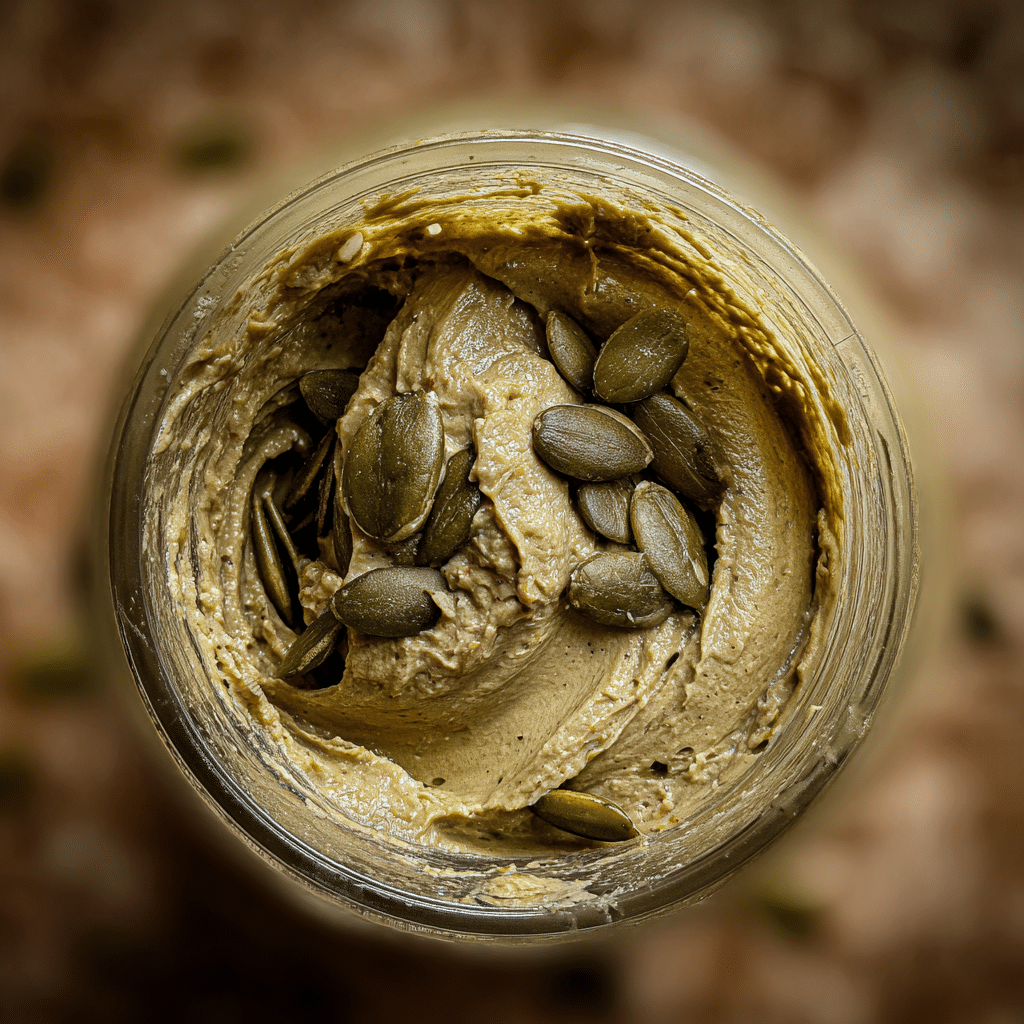
Troubleshooting Guide
No recipe is without its challenges, so let’s address some common issues you might encounter while making pumpkin seed butter. One common problem is achieving the right consistency. If your butter feels too thick or dry, don’t hesitate to add a little bit of oil—pumpkin seed oil works beautifully, or you can use a neutral oil like grapeseed. Start with a teaspoon, blend again, and add more as needed until you reach your desired creaminess.
Another issue could be graininess. If your butter doesn’t feel smooth, it may be due to the seeds not being processed long enough. Continue blending, and give it a few more minutes of processing. Sometimes, adding a bit of liquid can also help break down the texture. Be mindful of the amount, though; you don’t want to make it too runny!
Presentation Tips
pumpkin seed butter, it’s time to present it beautifully. A simple glass jar can elevate your spread, especially when you layer it with other spreads like almond or sunflower seed butter for a colorful display. Consider garnishing with a sprinkle of sea salt or a drizzle of honey on top. This not only looks appealing but also adds an extra hint of flavor.
When it comes to serving, pair your pumpkin seed butter with an assortment of dippers. Sliced apples and pears, crunchy celery sticks, or even homemade crackers can create a beautiful charcuterie board. For a touch of elegance, serve it alongside a glass of Chardonnay or a light-bodied red wine. The nutty flavors of the pumpkin seed butter complement the wine beautifully, making for a delightful pairing.
Lastly, if you find yourself with excess pumpkin seed butter, don’t worry! It can be stored in the refrigerator for up to two weeks. Just make sure to keep it in an airtight container to maintain its freshness. You can also freeze it for up to three months, making it a great option for meal prep.
Creative Variations and Adaptations of pumpkin seed butter
One of the most exciting aspects of making pumpkin seed butter is the ability to experiment with flavors and create variations that suit your palate. Just like any beloved recipe, this spread can be customized to match seasonal ingredients, dietary needs, and creative inspirations. Let’s dive into some innovative variations that will keep your pumpkin seed butter game fresh and exciting.
Seasonal Variations
As the seasons change, so do the flavors around us. In the fall, why not infuse your pumpkin seed butter with pumpkin spice? A blend of cinnamon, ginger, nutmeg, and clove can evoke the warmth of autumn and make for a perfect spread for your morning toast or a seasonal dessert. Simply add a teaspoon of each spice to your base recipe and blend until combined.
In the spring and summer months, consider incorporating fresh herbs like basil or mint for a refreshing twist. Pairing these with a bit of citrus zest can create a bright and vibrant spread that’s perfect for summer picnics. Imagine a basil-infused pumpkin seed butter served alongside grilled vegetables—delicious!
Dietary Adaptations
Whether you’re gluten-free, vegan, or following a keto diet, pumpkin seed butter is incredibly versatile and can be adapted to fit various dietary lifestyles. For those on a vegan diet, this butter is already a perfect choice, but you can enhance its nutritional profile by adding a scoop of protein powder or nutritional yeast to give it a cheesy flavor without the dairy.
If you’re watching your carb intake, consider sweetening your pumpkin seed butter with sugar alternatives like stevia or erythritol instead of honey or maple syrup. This will keep your spread low in carbs while still providing that delightful sweetness.
Creative Twists
Now let’s explore some truly creative twists on the classic pumpkin seed butter. One of my favorite adaptations is a chocolate pumpkin seed butter. Simply add some cocoa powder and a bit of sweetener to the mix for a decadent treat that’s perfect for spreading on pancakes or drizzling over desserts. You could even swirl in some melted dark chocolate for an extra indulgent treat!
Another fun variation is to create an Asian-inspired pumpkin seed butter by adding a splash of soy sauce and a hint of sesame oil. This funky twist can be used as a dip for fresh spring rolls or as a drizzle over roasted vegetables. The nutty flavors of the pumpkin seeds combined with the umami of the soy sauce create a unique flavor profile that’s sure to impress your guests.
Lastly, if you have leftovers from your pumpkin seed butter, consider using them in baking. Swirl it into muffins, brownies, or even pancake batter for an added nutty flavor that enhances your baked goods. The possibilities are endless!
With all these ideas for variations, your journey with pumpkin seed butter is just beginning. Each twist not only enhances the flavor but also allows you to create a product that feels personal to you. So, roll up your sleeves, get creative, and enjoy the delightful world of pumpkin seed butter!
Storage, Reheating, and Meal Prep for pumpkin seed butter
When it comes to enjoying pumpkin seed butter, proper storage is key to preserving its rich flavor and creamy texture. Whether you’ve made a big batch for the week or you’ve just opened a store-bought jar, understanding how to store this delicious spread can significantly affect its longevity and quality. In this section, we’ll explore various storage methods, meal prep strategies, and food safety tips to ensure your pumpkin seed butter remains fresh and delightful.
Short-term Storage
For short-term storage, the refrigerator is your best friend. After opening a jar of pumpkin seed butter, it’s essential to keep it in the fridge to maintain its freshness and prevent oils from separating. I remember the first time I made my own batch; I was so excited that I left it on the counter, only to find it had developed a slightly off taste by the end of the week. Lesson learned! Always use an airtight container for optimal freshness. If you’ve made your own, transfer it to a clean glass jar with a tight-fitting lid. This not only helps keep the butter fresh but also reduces the risk of contamination from other foods in your fridge.
When storing in the fridge, try to keep the jar towards the back, where temperatures are more stable, rather than in the door, which can be prone to temperature fluctuations. Ideally, your pumpkin seed butter should last in the fridge for about 2-3 weeks. If you notice any unusual smells, flavors, or signs of mold, it’s best to discard it.
Freezing and Long-term Storage
If you’ve made a large batch of pumpkin seed butter or simply want to make sure you have some on hand for later, freezing is a fantastic option. Believe it or not, pumpkin seed butter freezes quite well, maintaining its texture and flavor. To freeze, portion your butter into smaller containers or freezer-safe bags. I often use ice cube trays for this; it’s a simple way to have pre-measured amounts ready to go.
Once the portions are frozen solid, you can transfer them to a larger freezer bag, squeezing out as much air as possible to prevent freezer burn. It’s also a good idea to label the bag with the date, so you know how long it’s been in there. Generally, frozen pumpkin seed butter can last for about 3-6 months, but the fresher, the better!
Reheating Best Practices
When it comes time to enjoy your frozen pumpkin seed butter, it’s essential to let it thaw properly. I recommend moving it from the freezer to the fridge for a few hours or overnight. If you’re in a hurry, you can also thaw it at room temperature for about 30 minutes. Avoid using the microwave, as it can cause the oils to separate and result in a less creamy consistency.
Once thawed, if you find that your pumpkin seed butter has become a bit thick, stirring in a small amount of neutral oil, like avocado or grapeseed oil, can help restore its creamy texture. This little trick has saved me many times when I’ve been in a rush and needed my spread to be smooth and spreadable!
Meal Prep and Batch Cooking Strategies
Meal prepping with pumpkin seed butter can open up a world of nutritious and tasty possibilities. Consider preparing it in larger batches, especially if you find yourself reaching for it often. One of my favorite meal prep strategies is to make a big batch on the weekend and use it throughout the week in various ways—spread on toast, drizzled over oatmeal, or even incorporated into smoothies.
You can also make delicious snacks by combining pumpkin seed butter with oats, honey, and chocolate chips to create energy balls. I often make these on a Sunday evening, roll them into bite-sized balls, and keep them in the fridge for a quick grab-and-go snack during the week.
Food Safety Considerations and Guidelines
Food safety is paramount when it comes to storing pumpkin seed butter. Always use clean utensils when scooping from the jar to avoid introducing bacteria. If you’re making your own, ensure all equipment is sanitized, and store the butter in a clean, airtight container. If you notice any signs of spoilage, such as off smells or colors, it’s best to err on the side of caution and discard it.
Understanding the shelf life of your pumpkin seed butter is crucial. Generally, homemade versions don’t last as long as store-bought ones due to the absence of preservatives. However, by following proper storage techniques and paying attention to expiration dates, you can enjoy your delicious spread worry-free.
Portioning and Packaging Tips
When it comes to portioning your pumpkin seed butter, think about how you plan to use it. If you love adding it to smoothies or spreading it on toast, consider portioning it into tablespoons or half-cup containers. This makes it easy to grab exactly what you need without having to dig into a large jar every time. Additionally, using clear containers can help you visually track how much you have left, which is particularly handy for ensuring you use it before it goes bad.
In conclusion, proper storage of pumpkin seed butter can enhance your culinary experiences and ensure that you always have this delightful spread ready to enjoy. From short-term refrigeration to long-term freezing, the key is to keep it fresh and accessible. With the right techniques, you’ll find that pumpkin seed butter can become a staple in your kitchen, ready to elevate your meals and snacks!
Nutritional Benefits and Health Information
Understanding the nutritional benefits of pumpkin seed butter is essential for those looking to enhance their diet while enjoying a flavorful and versatile spread. This nut butter alternative is packed with nutrients and health benefits that can fit seamlessly into various dietary lifestyles. In this section, we will delve deep into the nutritional profile of pumpkin seed butter, its health benefits, and considerations for those with dietary restrictions.
Nutritional Profile
Let’s start with a detailed breakdown of the nutritional content of pumpkin seed butter. A typical serving size of about two tablespoons contains approximately:
- Calories: 180-200
- Protein: 8-9 grams
- Fat: 16 grams (of which saturated fat is about 2 grams)
- Carbohydrates: 4-6 grams (including dietary fiber of about 2-3 grams)
- Sugar: 1 gram or less
This makes pumpkin seed butter a fantastic source of healthy fats, particularly monounsaturated and polyunsaturated fats, which are known to support heart health. Additionally, the protein content is beneficial for those looking to incorporate more plant-based protein into their diets.
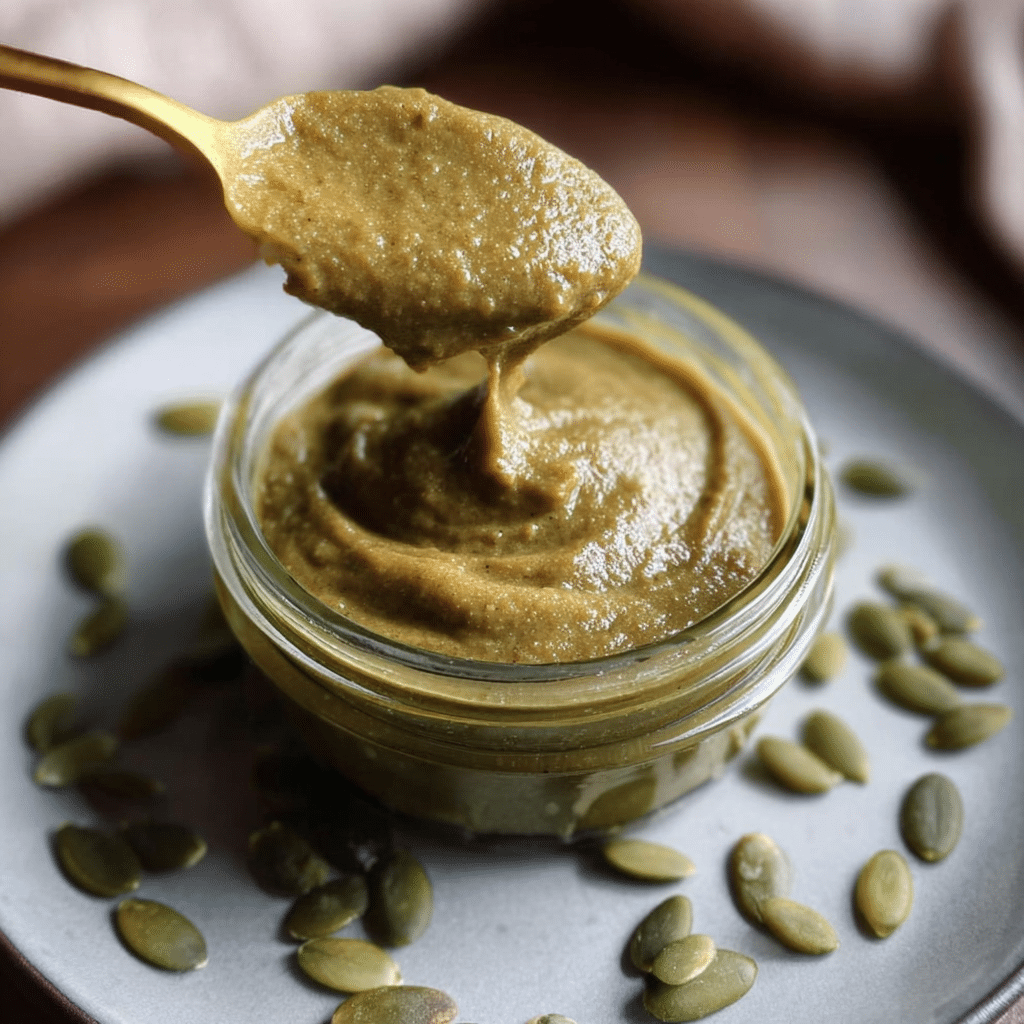
Health Benefits
One of the standout features of pumpkin seed butter is its rich nutrient profile, which includes a plethora of vitamins and minerals. It is particularly high in magnesium, zinc, and iron, which are essential for various bodily functions. Magnesium plays a crucial role in muscle function and energy production, while zinc supports the immune system and promotes wound healing. Iron is vital for transporting oxygen in the blood, making it an important nutrient for overall health.
Moreover, pumpkin seed butter is packed with antioxidants, which help combat oxidative stress and inflammation in the body. As someone who enjoys a balanced diet, I often find myself reaching for this nut butter after a workout for its recovery benefits. The combination of protein and healthy fats helps to replenish energy stores while promoting muscle repair.
Dietary Considerations
Now, let’s talk about dietary considerations. Pumpkin seed butter is naturally gluten-free and dairy-free, making it an excellent choice for those with gluten sensitivities or lactose intolerance. However, it’s important to be aware of potential allergens. While pumpkin seeds are generally considered safe, they can still cause allergic reactions in some individuals. Always check with a healthcare provider if you suspect food allergies.
In terms of calorie content, pumpkin seed butter is relatively calorie-dense, which is something to consider if you’re watching your caloric intake. However, it can be an excellent addition to a balanced diet, especially for those following a plant-based or vegetarian lifestyle. The healthy fats and proteins make it a satisfying option that can keep you feeling full longer.
For those following specific diet plans, like Paleo or Keto, pumpkin seed butter fits well as a healthy fat source. You can use it in various recipes, from smoothies to sauces, without compromising your dietary goals.
If you’re looking to make healthy modifications, consider using pumpkin seed butter in place of less nutritious spreads. For instance, swap it for peanut or almond butter in recipes to add unique flavor and nutritional benefits. You can also blend it into baked goods or use it as a topping for yogurt or oatmeal, enhancing the nutrient profile of your meals.
In comparison to similar nut butters, pumpkin seed butter stands out for its unique flavor and nutritional benefits. While almond and peanut butters are more commonly known, pumpkin seed butter offers a delightful taste that can diversify your palate. It has a slightly earthy and nutty flavor that pairs well with both sweet and savory dishes, making it an excellent alternative for those looking to try something new.
In conclusion, pumpkin seed butter is not only a delicious spread but also a powerhouse of nutrition. With its robust profile of vitamins, minerals, and healthy fats, it can be a valuable addition to any diet. Whether you’re using it for meal prep, in recipes, or simply spreading it on toast, you can enjoy the myriad health benefits it offers while savoring its unique flavor.
Frequently Asked Questions About Pumpkin Seed Butter
How can I make Chocolate Pumpkin Seed Butter?
To make Chocolate Pumpkin Seed Butter, start by roasting 1 cup of raw pumpkin seeds in a preheated oven at 350°F (175°C) for about 10-12 minutes until they are golden and fragrant. Once cooled, transfer the seeds to a food processor and blend until they turn into a smooth butter. Gradually add in 2-3 tablespoons of cocoa powder, 2 tablespoons of honey or maple syrup for sweetness, and a pinch of salt. For a creamier texture, you can also incorporate a tablespoon of coconut oil. Blend until fully combined and adjust sweetness to taste before storing in an airtight container.
What is a simple recipe for homemade Pumpkin Seed Butter?
A simple recipe for homemade Pumpkin Seed Butter involves just a few ingredients and steps. Begin by roasting 1-2 cups of raw pumpkin seeds at 350°F (175°C) for 10-15 minutes until they are lightly browned. Allow them to cool slightly, then add the seeds to a food processor. Blend continuously for about 5-10 minutes, stopping to scrape down the sides as needed, until the mixture becomes a smooth and creamy texture. You can enhance the flavor by adding a pinch of salt, cinnamon, or a drizzle of honey, depending on your taste preferences. Store the butter in a glass jar in the refrigerator for up to two weeks.
What are the health benefits of Pumpkin Seed Butter?
Pumpkin Seed Butter is packed with nutrition and offers several health benefits. It is a rich source of healthy fats, protein, and essential vitamins and minerals, including magnesium, zinc, and vitamin E. These nutrients can contribute to heart health, support immune function, and promote skin health. Additionally, the high levels of antioxidants found in pumpkin seeds may help combat inflammation and protect against chronic diseases. Incorporating pumpkin seed butter into your diet can also help keep you satiated, making it a great option for healthy snacking or as a spread.
How much protein is in Pumpkin Seed Butter?
Pumpkin Seed Butter is an excellent source of plant-based protein, containing approximately 7 grams of protein per 2-tablespoon serving. This makes it a fantastic option for those looking to increase their protein intake, whether you’re vegetarian, vegan, or simply looking for nutritious alternatives. In addition to its protein content, pumpkin seed butter also provides essential amino acids, which are crucial for muscle repair and overall health. For an added protein boost, consider pairing it with high-protein foods like Greek yogurt or adding it to smoothies. Always check the nutrition label if you’re purchasing store-bought versions, as protein content may vary based on the brand.
Conclusion: Mastering the Perfect pumpkin seed butter
Creating the perfect pumpkin seed butter is more than just following a recipe—it’s about understanding the techniques, ingredients, and cultural significance behind this beloved dish. Throughout this comprehensive guide, we’ve explored everything from the historical origins to modern variations, ensuring you have all the knowledge needed to make this recipe your own.
Whether you’re a beginner cook or an experienced chef, the techniques and tips we’ve shared will help you create a pumpkin seed butter that’s not only delicious but also meaningful. Remember that cooking is a journey of discovery, and each time you make this dish, you’ll learn something new.
We encourage you to experiment with the variations we’ve discussed, adapt the recipe to your dietary needs, and most importantly, share it with the people you love. Food has the incredible power to bring people together, and Pumpkin Seed Butter is the perfect dish to create lasting memories around your dinner table.

